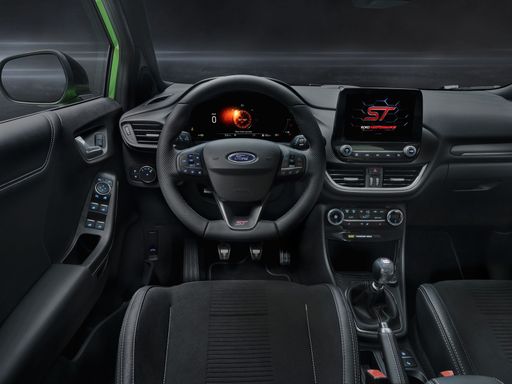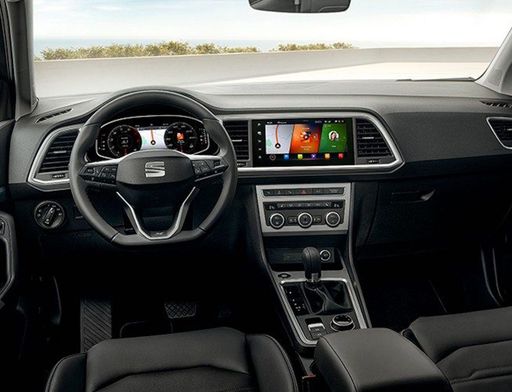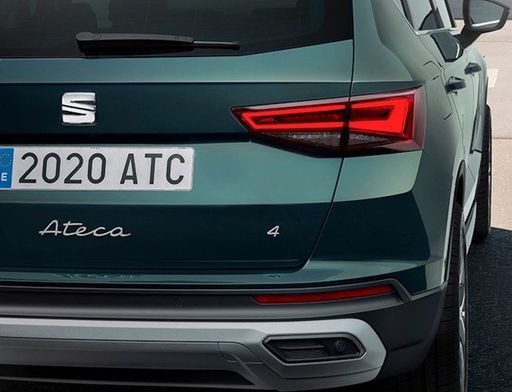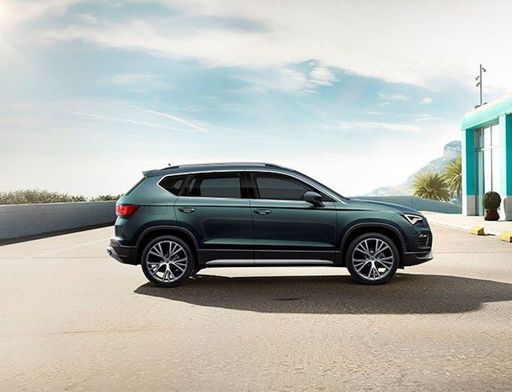Ford Puma vs SEAT Ateca – Which car suits you better?
Two cars, one duel: Ford Puma meets SEAT Ateca.
Which one wins in performance, efficiency and value for money? Find out now!
Costs and Efficiency: When it comes to price and running costs, the biggest differences usually appear. This is often where you see which car fits your budget better in the long run.
Ford Puma has a slight advantage in terms of price – it starts at 24800 £, while the SEAT Ateca costs 25100 £. That’s a price difference of around 334 £.
Fuel consumption also shows a difference: SEAT Ateca manages with 4.90 L and is therefore to a small extent more efficient than the Ford Puma with 5.40 L. The difference is about 0.50 L per 100 km.
Engine and Performance: Power, torque and acceleration are the classic benchmarks for car enthusiasts – and here, some clear differences start to show.
When it comes to engine power, the Ford Puma has a a bit edge – offering 168 HP compared to 150 HP. That’s roughly 18 HP more horsepower.
In acceleration from 0 to 100 km/h, the Ford Puma is distinct quicker – completing the sprint in 7.40 s, while the SEAT Ateca takes 9 s. That’s about 1.60 s faster.
In terms of top speed, the Ford Puma performs slight better – reaching 210 km/h, while the SEAT Ateca tops out at 202 km/h. The difference is around 8 km/h.
There’s also a difference in torque: SEAT Ateca pulls somewhat stronger with 360 Nm compared to 290 Nm. That’s about 70 Nm difference.
Space and Everyday Use: Beyond pure performance, interior space and usability matter most in daily life. This is where you see which car is more practical and versatile.
Both vehicles offer seating for 5 people.
In curb weight, Ford Puma is barely noticeable lighter – 1316 kg compared to 1345 kg. The difference is around 29 kg.
In terms of boot space, the Ford Puma offers minimal more room – 523 L compared to 510 L. That’s a difference of about 13 L.
In maximum load capacity, the SEAT Ateca performs distinct better – up to 1604 L, which is about 321 L more than the Ford Puma.
When it comes to payload, SEAT Ateca somewhat takes the win – 525 kg compared to 469 kg. That’s a difference of about 56 kg.
Who comes out on top?
Overall, the SEAT Ateca shows itself to be outperforms in nearly all aspects and secures the title of DriveDuel Champion.
It convinces with the more balanced overall package and proves to be the more versatile choice for everyday use.

SEAT Ateca
Ford Puma
The Ford Puma presents itself as a stylish compact SUV with a distinctive design that combines practicality with a dynamic driving experience. Its sleek lines and sporty aesthetics make it stand out on the road, while the interior offers a comfortable and tech-savvy environment. With an emphasis on efficiency and a smooth drive, the Ford Puma is well-suited for both urban commutes and countryside adventures.
details @ puma.fordpresskits.com
@ puma.fordpresskits.com
 @ puma.fordpresskits.com
@ puma.fordpresskits.com
 @ puma.fordpresskits.com
@ puma.fordpresskits.com
 @ puma.fordpresskits.com
@ puma.fordpresskits.com
SEAT Ateca
The SEAT Ateca stands out with its dynamic design, perfectly blending style and functionality for urban and rural settings alike. Inside, it offers a spacious and comfortable cabin, complete with advanced technology and intuitive controls that enhance the driving experience. On the road, the Ateca delivers a balanced performance, providing a smooth ride with agile handling that makes it versatile for various driving conditions.
details @ seat-mediacenter.com
@ seat-mediacenter.com
 @ seat-mediacenter.com
@ seat-mediacenter.com
 @ seat-mediacenter.com
@ seat-mediacenter.com
 @ seat-mediacenter.com
@ seat-mediacenter.com
 @ seat-mediacenter.com
@ seat-mediacenter.com

|

|
|
|
|
Costs and Consumption |
|
|---|---|
|
Price
24800 - 36300 £
|
Price
25100 - 36900 £
|
|
Consumption L/100km
5.4 - 5.9 L
|
Consumption L/100km
4.9 - 6.4 L
|
|
Consumption kWh/100km
13.1 - 13.9 kWh
|
Consumption kWh/100km
-
|
|
Electric Range
361 - 376 km
|
Electric Range
-
|
|
Battery Capacity
43 kWh
|
Battery Capacity
-
|
|
co2
0 - 135 g/km
|
co2
129 - 144 g/km
|
|
Fuel tank capacity
42 L
|
Fuel tank capacity
50 L
|
Dimensions and Body |
|
|---|---|
|
Body Type
SUV
|
Body Type
SUV
|
|
Seats
5
|
Seats
5
|
|
Doors
5
|
Doors
5
|
|
Curb weight
1316 - 1563 kg
|
Curb weight
1345 - 1514 kg
|
|
Trunk capacity
456 - 523 L
|
Trunk capacity
510 L
|
|
Length
4186 - 4226 mm
|
Length
4381 mm
|
|
Width
1805 mm
|
Width
1841 mm
|
|
Height
1550 - 1555 mm
|
Height
1601 mm
|
|
Max trunk capacity
1216 - 1283 L
|
Max trunk capacity
1604 L
|
|
Payload
367 - 469 kg
|
Payload
516 - 525 kg
|
Engine and Performance |
|
|---|---|
|
Engine Type
Electric, Petrol MHEV
|
Engine Type
Petrol, Diesel
|
|
Transmission
Automatic, Manuel
|
Transmission
Manuel, Automatic
|
|
Transmission Detail
Reduction Gearbox, Manual Gearbox, Dual-Clutch Automatic
|
Transmission Detail
Manual Gearbox, Dual-Clutch Automatic
|
|
Drive Type
Front-Wheel Drive
|
Drive Type
Front-Wheel Drive
|
|
Power HP
125 - 168 HP
|
Power HP
116 - 150 HP
|
|
Acceleration 0-100km/h
7.4 - 9.8 s
|
Acceleration 0-100km/h
9 - 11 s
|
|
Max Speed
160 - 210 km/h
|
Max Speed
183 - 202 km/h
|
|
Torque
170 - 290 Nm
|
Torque
200 - 360 Nm
|
|
Number of Cylinders
3
|
Number of Cylinders
3 - 4
|
|
Power kW
92 - 124 kW
|
Power kW
85 - 110 kW
|
|
Engine capacity
999 cm3
|
Engine capacity
999 - 1968 cm3
|
General |
|
|---|---|
|
Model Year
2025
|
Model Year
2024 - 2025
|
|
CO2 Efficiency Class
A, D
|
CO2 Efficiency Class
E, D
|
|
Brand
Ford
|
Brand
SEAT
|
Is the Ford Puma offered with different drivetrains?
The Ford Puma is offered with Front-Wheel Drive.
The prices and data displayed are estimates based on German list prices and may vary by country. This information is not legally binding.
